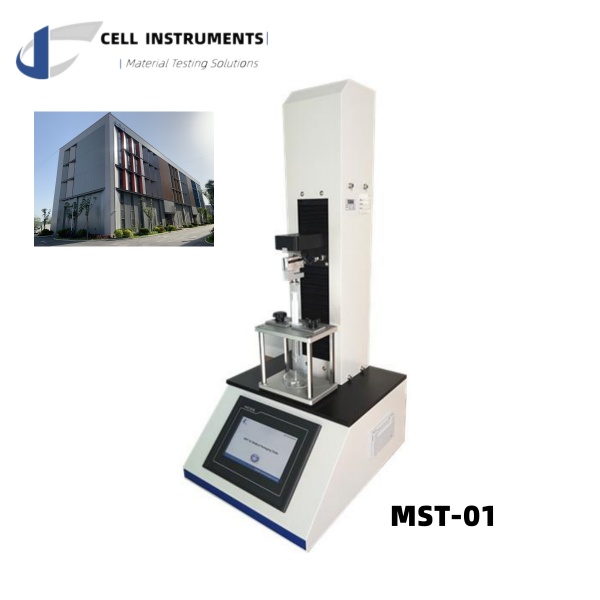Glide Force Testing for Syringes
Understanding the כוח גלישה of a syringe is critical in medical device manufacturing and quality assurance. As syringe designs evolve, testing procedures outlined in standards such as ISO 7886-1, ISO 11040-4, ו ISO 8537 help ensure consistent functionality, safety, and user experience. In this article, we explore how to evaluate syringe performance through כוח גלישה ו לשבור כוח testing, and why syringe functionality testing is essential for manufacturers and quality control personnel.
Break Loose Force and Glide Force in Syringe Functionality Testing
Definitions and Importance
- Break loose force is the initial force required to overcome static friction between the syringe plunger and barrel.
- Glide force refers to the sustained force needed to move the plunger after initial motion has started.
Both are central components in syringe functionality testing, ensuring smooth drug delivery, especially in applications such as insulin administration, vaccines, or auto-injectors.
Excessive glide force may hinder patient compliance, while insufficient resistance may indicate leakage or poor plunger-barrel interface. Therefore, accurate evaluation of these forces is mandated in various standards.
ISO Standards Guiding Syringe Glide Force Testing
ISO 7886-1: Sterile Hypodermic Syringes for Single Use
This standard outlines the procedures for testing piston operation, air and liquid leakage, and force measurements. Specifically, נספח E details how a mechanical testing machine should measure the force required to initiate and maintain piston travel. Parameters include:
- Break loose force (Fs): the peak force needed to start movement
- Mean glide force (F): the average force during travel
- Maximum force (Fmax): the highest sustained force during the stroke
Testing requires:
- Water-filled syringe connected to a reservoir
- Constant depression speed of 100 ± 5 mm/min
- Data acquisition of force vs. displacement
ISO 11040-4: Prefilled Syringes
This standard extends similar glide force testing for glass barrel syringes, commonly used in biopharmaceuticals. It emphasizes maintaining plunger stability, preventing rubber stopper detachment, and evaluating glide force profiles over the full stroke length.
ISO 8537: Insulin Syringes
Given the frequent use and fine dosages, insulin syringes must offer minimal but controlled glide force. Annex C specifies procedures to evaluate the piston operating force using mechanical test setups. Even slight deviations may lead to inconsistent dosing or poor user comfort.
How to Conduct Glide Force Testing
To perform compliant כוח גלישה ו לשבור כוח testing, follow this structured approach based on ISO guidance:
- Prepare the syringe: Fill with distilled water at 23 ± 5 °C, eliminating air bubbles.
- Mount the syringe: Secure it horizontally or vertically in a mechanical tester like the מכשירי תא MST-01.
- Set up the test system: Connect to a water reservoir via standard tubing (ID 2.7 ± 0.1 mm, length 195 ± 5 mm) and apply a constant linear speed.
- Begin the stroke: Move the plunger using the machine, record force vs. displacement in real time.
- Analyze results:
- Fs: initial peak on the curve
- F: average between start and end of the stroke
- Fmax: highest value post-initiation
Common Issues and How to Address Them
- High break loose force: May indicate excess silicone, poor rubber stopper tolerance, or inadequate lubrication.
- Inconsistent glide force: Could stem from uneven barrel surfaces or improper stopper design.
- Plunger hesitation: Suggests particle contamination or moisture-induced friction changes.
In all these cases, the MST-01 allows comparative testing under controlled conditions to identify root causes and drive improvements.
Why Use Cell Instruments MST-01 for Glide Force Testing
ה בודק מזרקים רפואיים MST-01 מִן מכשירי תא is specifically designed for compliance with ISO 7886-1, ISO 11040-4, ו ISO 8537. Its features include:
- High-precision force sensors (±1% accuracy)
- Programmable test speeds and displacement tracking
- Data output for Fs, F, and Fmax
- Compatibility with various syringe sizes and types
This enables users to perform כוח גלישה ו לשבור כוח testing with high repeatability, reducing operator error and increasing confidence in test results.
If you’re producing syringes for regulatory markets or validating R&D prototypes, integrating MST-01 streamlines your syringe functionality testing while maintaining full compliance with global standards.
מַסְקָנָה
Effective כוח גלישה ו לשבור כוח testing is essential for delivering safe, effective, and user-friendly syringes. Adhering to standards like ISO 7886-1, ISO 11040-4, ו ISO 8537 ensures consistency and regulatory compliance. With Cell Instruments’ MST-01, syringe manufacturers and quality control teams can confidently perform syringe functionality testing, generating accurate and reproducible data that inform design and production decisions.
שאלות נפוצות
Glide force is the continuous force required to move a syringe’s plunger after it has been initially displaced.
Break loose force is the peak force needed to start plunger movement, whereas glide force measures the average force during sustained motion.
These ISO standards ensure that syringe performance—including leakage, durability, and plunger operation—is consistent and safe for medical use.
The MST-01 tester from Cell Instruments provides precise control and measurement of syringe plunger forces, fully supporting ISO-compliant testing protocols.

